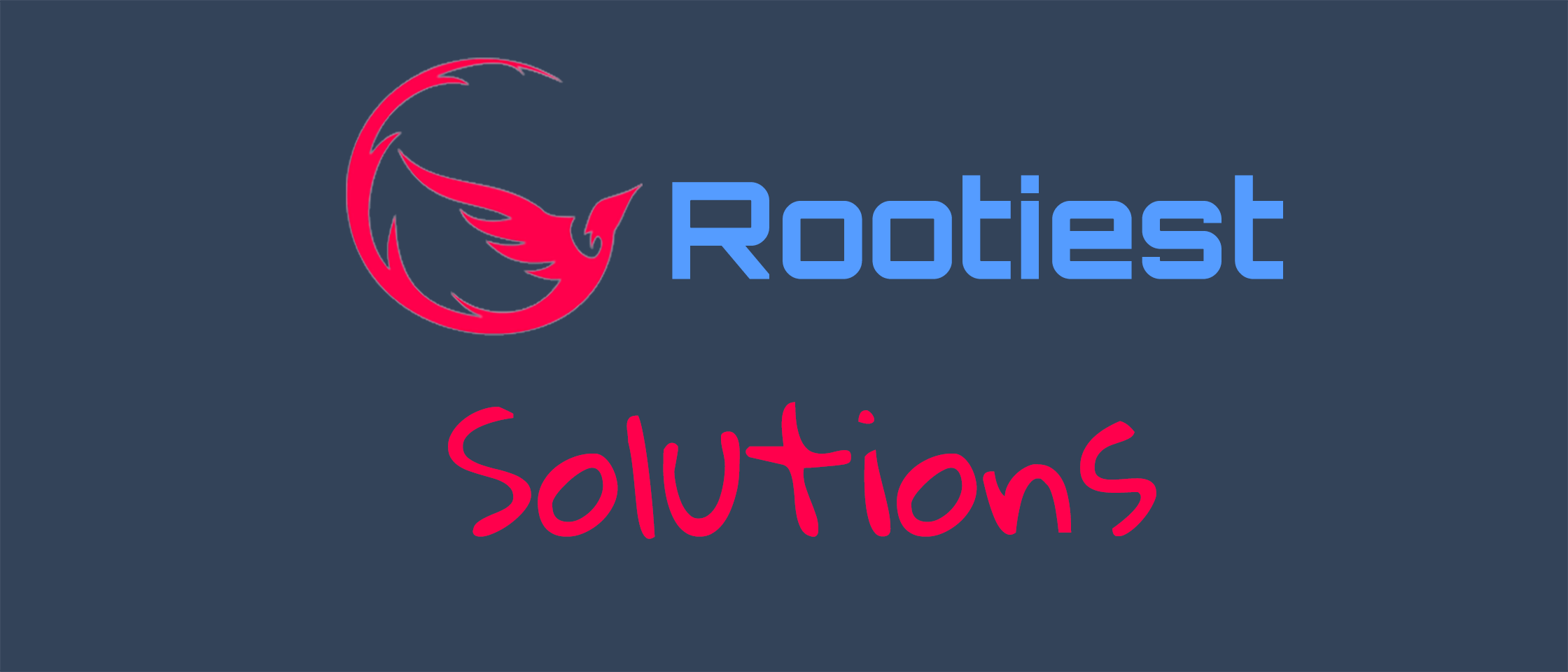I hate them. Let me chop the trees down in peace you worthless elves!
𝕽𝖔𝖔𝖙𝖎𝖊𝖘𝖙
- 4 Posts
- 162 Comments
Fine if no one else is gonna ask:
Did you win?

 3·5 months ago
3·5 months agoI don’t think it even has to be “more” so long as others as being fucked over that’s good enough for them
 1·5 months ago
1·5 months agoThanks, it really annoyed me that the whole article never once defined it

 3·5 months ago
3·5 months agoAs I understand it, it’s just as they said:
Calculating primes is fairly straightforward so you calculate a few large prime numbers, and do some math to them.
Now you have a strong key that didn’t require a supercomputer to create but taking that final number and turning it back into those original primes is a much more computationally expensive proposition.
In fact, it’s one that’s not viable with current technology.
 4·6 months ago
4·6 months agoHell yeah, charge them with manslaughter for every preventable COVID death of someone they “vaccinated”
At the very least they should have jail time for something like this
Seriously this was my first thought.
I actually remap PgDn/PgUp to Home/End on my poorly-designed keyboard that lacks those

 2·6 months ago
2·6 months agoA whitish-gray, cartoon-styled human skull with large, black eye sockets. Commonly expresses figurative death, e.g., dying from extreme laughter, frustration, or affection.
Popular around Halloween. Not to be confused with ☠️ Skull and Crossbones, though their applications may overlap.
Skull was approved as part of Unicode 6.0 in 2010 and added to Emoji 1.0 in 2015.
Ah yeah that’s the one, sorry
- 8 Hosts (6 physical/local, 2 VPS/remote)
- 72 Docker containers
- Pi-hole (3 of them, 2 local, 1 on a VPS)
- Orbital-sync (keeps the pi-holes synced up)
- Searxng (search engine)
- Kutt (URL shortener)
- LenPaste (Pastebin-like)
- Ladder (paywall bypass)
- Squoosh (Image converter, runs fully in browser but I like hosting it anyway)
- Paperless-ng (Document management)
- CryptPad (Secure E2EE office colaboration)
- Immich (Google Photos replacement)
- Audiobookplayer (Audiobook player)
- Calibre (Ebook management)
- NextCloud (Don’t honestly use this one much these days)
- VaultWarden (Password/2FA/PassKey management)
- Memos (Like Google Keep)
- typehere (A simple scratchpad that stores in browser memory)
- librechat (Kind of like chatgpt except self-hosted and able to use your own models/api keys)
- Stable Diffusion (AI image generator)
- JellyFin (Video streaming)
- Matrix (E2EE Secure Chat provider)
- IRC (oldschool chat service)
- FireFlyIII (finance management)
- ActualBudget (another finance thing)
- TimeTagger (Time tracking/invoicing)
- Firefox Sync (Use my own server to handle syncing between browsers)
- LibreSpeed (A few instances, to speed testing my connection to the servers)
- Probably others I can’t think of right now
Most of these I use at least regularly, quite a few I use constantly.
I can’t imagine living without Searxng, VaultWarden, Immich, JellyFin, and CryptPad.
I also wouldn’t want to go back to using the free ad-supported services out there for things like memos, kutt, and lenpaste.
Also librechat I think is underappreciated. Even just using it for GPT with an api key is infinitely better for your privacy than using the free chatgpt service that collects/owns all your data.
But it’s also great for using gpt4 to generate an image prompt, sending it through a prompt refiner, and then sending it to Stable Diffusion to generate an image, all via a single self-hosted interface.

 2·7 months ago
2·7 months agoYou’re right, for some reason I thought Firebase was allowed.
Yeah netfy is a FOSS notification service.
As to drop-in replacements, I don’t think such a thing really exists on the user side, this is fully up to the app developer in how they want to implement notifications.
To use netfy instead of FCM your app would need to be designed to do so or support it as an alternative option.

 1·7 months ago
1·7 months agoI think unless they use netfy or a similar alternative then yes.
The vast majority of apps will be using GCM or FCM for notifications.
Now whether or not those push messages are encrypted/don’t contain private data is up to the app developer so how much is exposed can certainly vary.

 1·7 months ago
1·7 months agoThat’s true, signal is pretty good about that.
I wasn’t saying Signal required them necessarily, just that even it uses them. But now reading back through my comment I can see how that could be easily misinterpreted. My bad

 1·7 months ago
1·7 months agoThat’s cool, but also doesn’t sound all that useful.
A fairly significant number of apps depends on Firebase and the like and don’t even have the option to pull notifications otherwise. And virtually every app at least use them.
When’s the last time you’ve seen a chat app that didn’t require push notifications to function? Even Signal uses them. (Though they do so in a way that doesn’t expose any private data)
You just can’t disable push without severely crippling the experience.
Further I’m not even sure disabling them on-device will change anything at all about governments being able to surveil them server-side. Afaik you are only stopping your phone from receiving them, they would still be sent to the Firebase server from the app’s cloud servers.
I don’t think this issue is avoidable other than app developers not using (or using in a secure manner) Firebase or GCM (or ACM) etc

 11·7 months ago
11·7 months agoSandboxed GooglePlay services can be used, if needed.
I don’t see how that would prevent this at all.
What is being discussed here is governments compromising the push notification service on Apple’s servers (and presumably Google’s as well)
Sandboxing Google services on your phone does nothing to change the fact that virtually all apps that receive messages/notifications are going to be using the push notification APIs that are compromised.
Whether or not private data is sent in those pushes and whether or not they are encrypted is up to the app developers.
It’s common for push messages to simply be used as a triggering mechanism to tell the device to download the message securely so much of what is compromised in those cases will simply be done metadata or even just “a new message is available”
But even so, that information could be used to link your device to data they acquired using other methods based on the timing of the push and subsequent download or “pull”
The problem is that if you go ahead and disable push notifications/only use apps that allow you to, you are going to have abysmal battery life and an increase in data use because your phone will have to constantly ping cloud servers asking if new messages/notifications are available.

 11·7 months ago
11·7 months agoI use AWS S3 🤷

 7·7 months ago
7·7 months agoPersonally I use vscode remote-ssh for editing random files on other servers if I want/need a GUI for it.
I am big into self-hosting and would be happy to run my own Headscale server (I have actually) but imo it’s not worth the effort.
It can be done but it requires a lot of effort and consideration to ensure the relays and routing work for when your clients are in challenging NAT scenarios. And the user experience is not as good.
Instead what I do is continue to use Tailscale but I use the Tailnet Lock feature to give signing authority to my own specified devices so any new devices must be signed off by one of those other devices.
This effectively eliminates the last point of trust where you had to trust tailscale’s servers to manage authorization. The result is you don’t have to worry about trusting tailscale at all, the entire system is zero trust.
The catch is if you lose those devices and the recovery keys you lose the ability to trust or add to your tailnet and your only real option is to delete all the devices and start fresh.
They also have the option to send a recovery key to their servers when you enable Tailnet Lock so support can rescue you in that scenario, but I think if you are using this feature on the first place it’s because you don’t want to do that so I imagine most choose not to lol
I linked to their blog post above because I think it explains the feature well. If you just want the docs they are here
Tailscale Free has a 100 device limit.
Virtually its only limitation against the paid plans is the user limit. (3 users)
And network logging because it’s heavy on their servers.
Also the user limit only applies to your account. You can share devices/etc with other accounts, as many others as you like.






Love